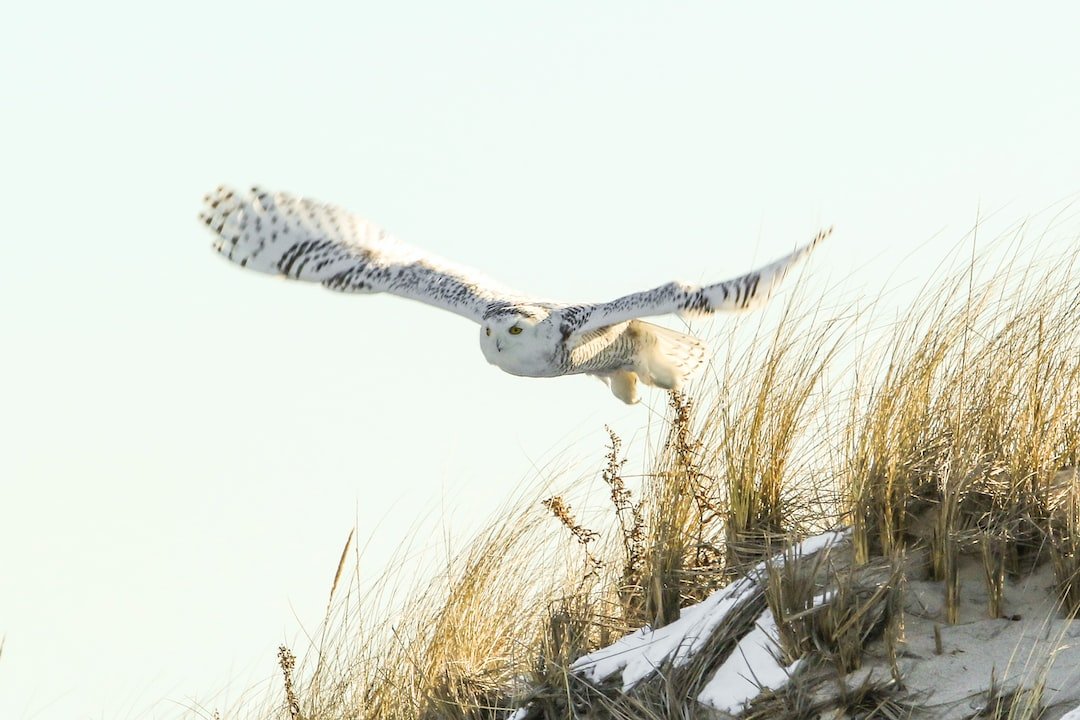Discover the Enchanting World of Owls in Wetland Habitats
Category : Owl habitats | Sub Category : Wetland owl habitats Posted on 2023-07-07 21:24:53

Discover the Enchanting World of Owls in Wetland Habitats
Introduction:
Owls have long been considered mystical creatures, captivating our imaginations with their piercing eyes, silent flight, and haunting calls. These majestic birds of prey are very Adaptable and can be found in a lot of different habitats. We will explore the benefits and challenges of owls in this post, and we will also look at the fascinating world of owls.
1 Why are owls drawn to wetlands?
Wetlands are rich and diverse with life. These habitats are ideal for owls because of the bounty of resources. Wetlands have an abundant supply of food in the form of fish, amphibians, reptiles, insects, and small mammals, which owls feast upon. Wetlands' dense vegetation and ample nest sites provide privacy and shelter for these birds.
2 The common owl species is found in wetlands.
The great horned owls are one of the most prevalent owl species in the wetlands. They can hunt their prey from perches in the trees or on the ground in wetlands.
The barred owl has a loud sound through the night. They are skilled hunters who prey on small mammals, fish and even salamanders.
The short-eared Owl has a unique hunting style, flying low over the wetlands to catch their prey. Short-eared owls are known to flock to coastal wetlands, where they eat small mammals and birds.
3 Hunting in wetlands can be adapted.
Owls have amazing abilities that help them in hunting in the wetlands. For instance:
Owls' feathers are specially designed to reduce noise while flying, so they can sneak up on their prey undetected.
Their large facial disks act as satellite dishes, allowing them to locate prey even in complete darkness.
Owls have beaks and talons that help them grasp and capture their prey in wetlands.
4 Wetlands owl habitats have challenges.
Wetlands are facing increasing threats and challenges despite owls' ability to adapt. Wetlands are being destroyed due to pollution, and climate change poses a risk to these birds. Ensuring the survival of owl populations and the overall health of wetlands is a priority.
Conclusion
Wetlands are vital for owls because of the abundant food sources, suitable habitat and cover from the predator. These nocturnal hunters are amazing and we can see their amazing behaviors firsthand. We can protect the wetlands and the owls that call them home by understanding the significance of the wetlands and the challenges they face.
Leave a Comment:
SEARCH
Recent News
- Zurich, Switzerland is not only known for its picturesque landscapes and vibrant culture but also for its diverse wildlife. While the city may be more commonly associated with its financial sector and luxury shopping, there are some rare and fascinating animals that call Zurich home.
- YouTube Content Creation: Showcasing Rare Animals through Translation
- If you are a nature enthusiast and love learning about rare and exotic animals, there are several YouTube channels dedicated to showcasing these fascinating creatures in their natural habitats. These channels provide a unique opportunity to educate yourself about lesser-known species and the importance of conservation efforts.
- The Importance of Developing Rare Skills Like a Rare Animal in the Workplace
- Women in Politics: Breaking Barriers and Making History
- Warsaw, the capital city of Poland, is not only known for its rich history and beautiful architecture but also for its unique and diverse wildlife. Despite being a bustling urban center, Warsaw is home to some rare and fascinating animals that can be found in various parks, forests, and reserves in and around the city.
- Vietnam is a country known for its rich culture, beautiful landscapes, and delicious cuisine. However, it is also home to a variety of rare and endangered animals that are found nowhere else in the world. In recent years, some Vietnamese businesses and companies have taken initiatives to help protect these precious species and their habitats.
- Vienna, the capital city of Austria, is known for its rich history, stunning architecture, and vibrant cultural scene. But did you know that Vienna is also home to a variety of rare and interesting animals? From exotic species at the Vienna Zoo to elusive wildlife in the surrounding countryside, there are plenty of fascinating creatures to discover in and around this beautiful city.
READ MORE
2 months ago Category : owlo

Zurich, Switzerland is not only known for its picturesque landscapes and vibrant culture but also for its diverse wildlife. While the city may be more commonly associated with its financial sector and luxury shopping, there are some rare and fascinating animals that call Zurich home.
Read More →2 months ago Category : owlo

YouTube Content Creation: Showcasing Rare Animals through Translation
Read More →2 months ago Category : owlo

If you are a nature enthusiast and love learning about rare and exotic animals, there are several YouTube channels dedicated to showcasing these fascinating creatures in their natural habitats. These channels provide a unique opportunity to educate yourself about lesser-known species and the importance of conservation efforts.
Read More →2 months ago Category : owlo
